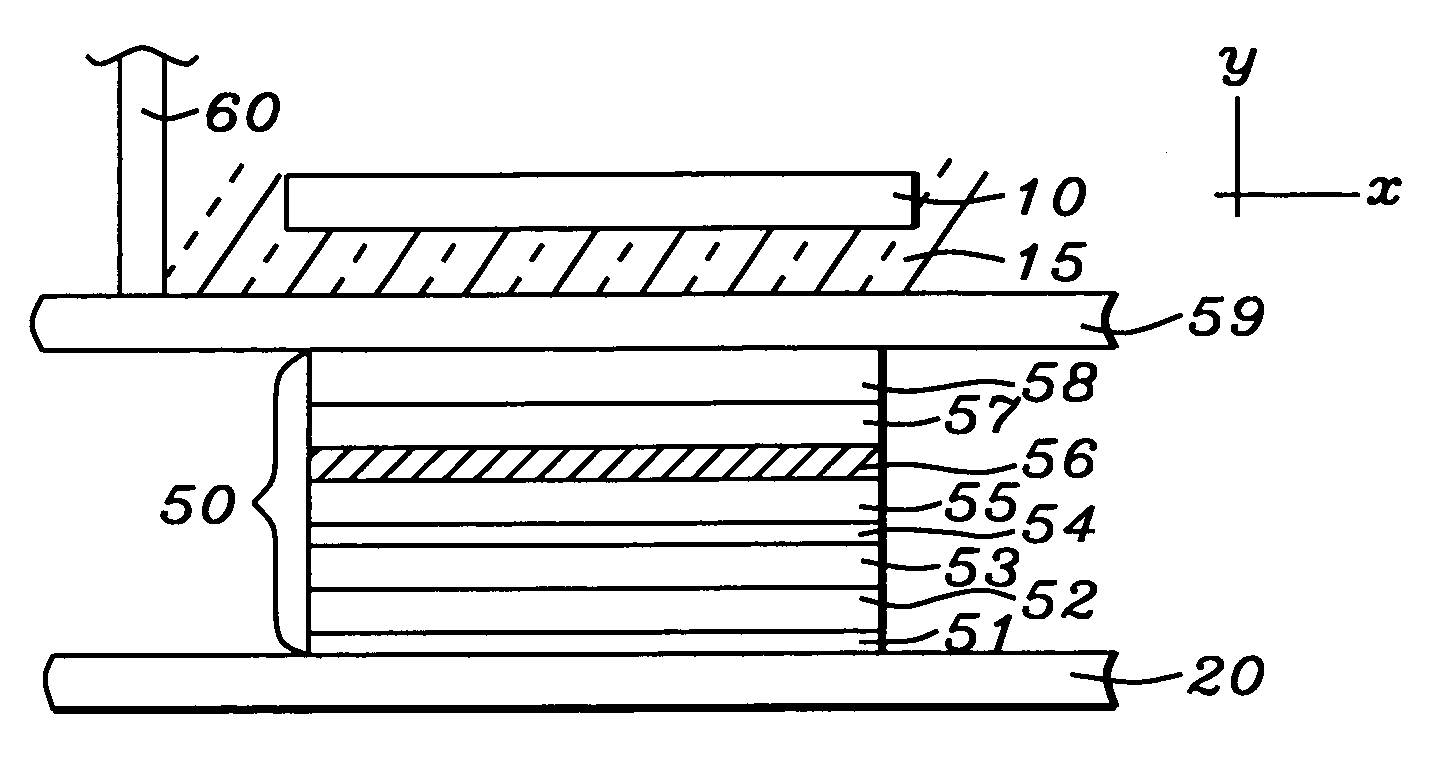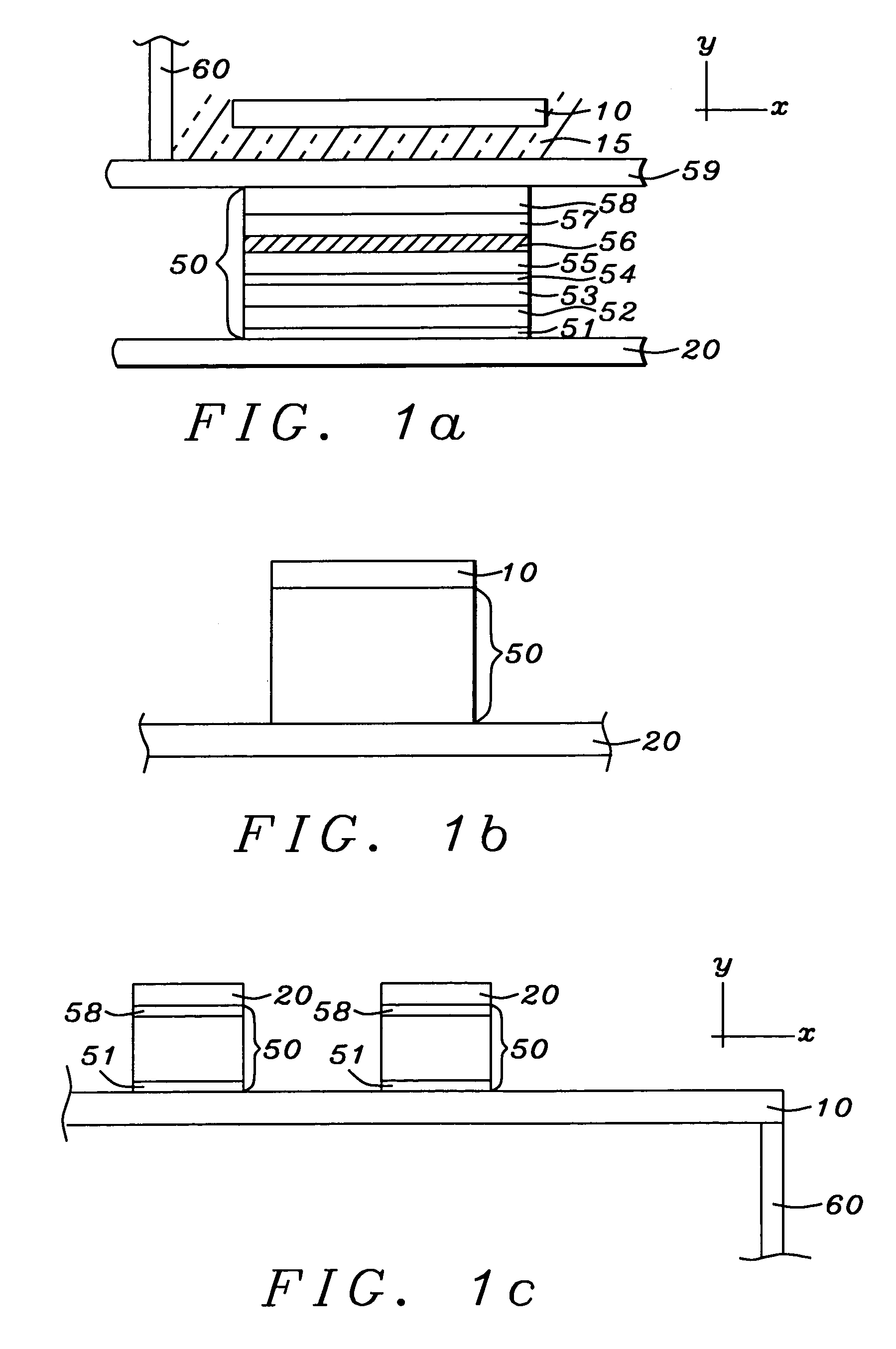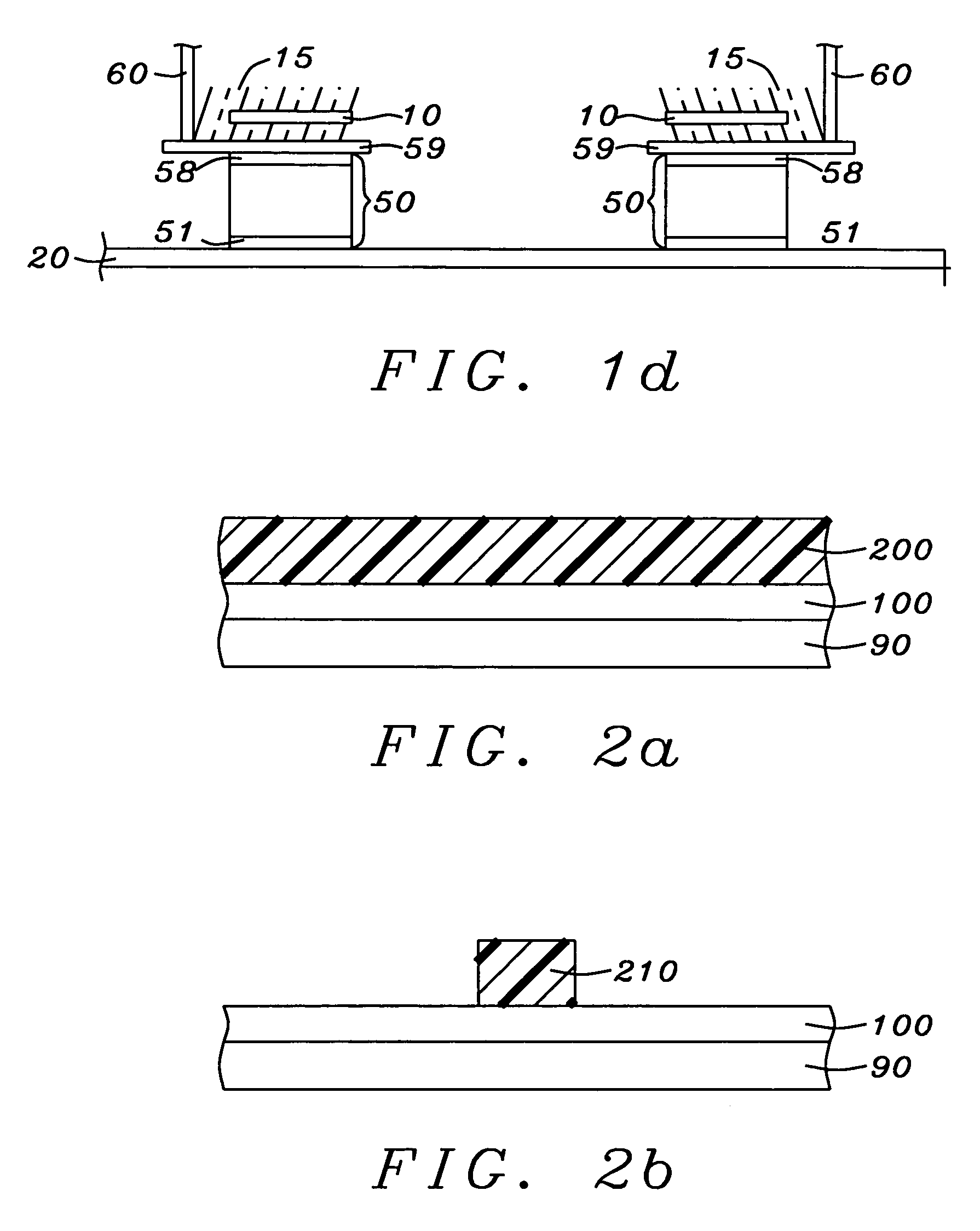Magnetic random access memory array with thin conduction electrical read and write lines
a random access, magnetic technology, applied in the direction of digital storage, semiconductor devices, instruments, etc., can solve the problems of increasing the size of the required switching field, bringing with it its own problems, and causing significant problems, so as to reduce the high current, increase the switching field at the free layer, and achieve exceptional thinness
- Summary
- Abstract
- Description
- Claims
- Application Information
AI Technical Summary
Benefits of technology
Problems solved by technology
Method used
Image
Examples
Embodiment Construction
[0027]The preferred embodiment of the present invention is an MTJ MRAM cell formed at an intersection of ultra-thin word and bit lines, more specifically between those lines, so that smaller currents can still produce adequate switching fields at the location of the cell free layer.
[0028]Referring again to FIG. 1a, there is shown the multi-layered MTJ cell element (50) formed between orthogonally directed, vertically separated ultra-thin word (10) and bit (20) lines of the invention. The two lines extend in vertically separated horizontal planes, crossing over each other but insulated from each other and forming, thereby, an intersection at which the cell is located. In all that follows, the term “intersection” is taken to mean a vertically separated crossing of lines. The word line is directed perpendicularly out of the figure plane, the bit line is within the figure plane. An additional conducting electrode, (alternatively denoted a read-word line), used in read operations (59), i...
PUM
 Login to View More
Login to View More Abstract
Description
Claims
Application Information
 Login to View More
Login to View More - R&D
- Intellectual Property
- Life Sciences
- Materials
- Tech Scout
- Unparalleled Data Quality
- Higher Quality Content
- 60% Fewer Hallucinations
Browse by: Latest US Patents, China's latest patents, Technical Efficacy Thesaurus, Application Domain, Technology Topic, Popular Technical Reports.
© 2025 PatSnap. All rights reserved.Legal|Privacy policy|Modern Slavery Act Transparency Statement|Sitemap|About US| Contact US: help@patsnap.com



